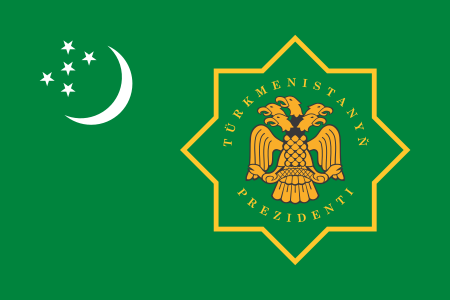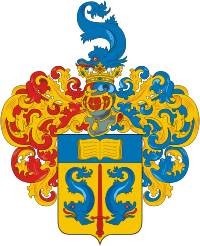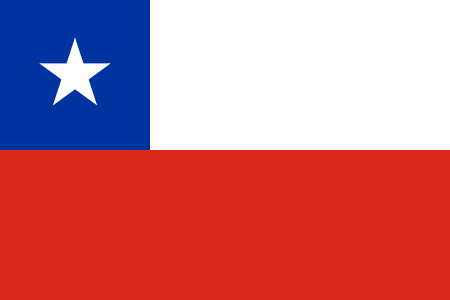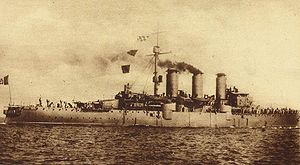Italian cruiser Amalfi
| |||||||||||||||||||||||||||||||||||||||||||||
Read other articles:

Questa voce sull'argomento storia contemporanea è solo un abbozzo. Contribuisci a migliorarla secondo le convenzioni di Wikipedia. Segui i suggerimenti del progetto di riferimento. Atto d'accusa – Norimberga – Tribunale Militare Internazionale (1945) I processi secondari di Norimberga furono una serie di dodici processi tenuti da tribunali militari statunitensi per crimini di guerra contro i membri sopravvissuti del potere militare, politico ed economico della Germania nazista. Tenuti …

土库曼斯坦总统土库曼斯坦国徽土库曼斯坦总统旗現任谢尔达尔·别尔德穆哈梅多夫自2022年3月19日官邸阿什哈巴德总统府(Oguzkhan Presidential Palace)機關所在地阿什哈巴德任命者直接选举任期7年,可连选连任首任萨帕尔穆拉特·尼亚佐夫设立1991年10月27日 土库曼斯坦土库曼斯坦政府与政治 国家政府 土库曼斯坦宪法 国旗 国徽 国歌 立法機關(英语:National Council of Turkmenistan) 土�…

此條目需要补充更多来源。 (2021年7月4日)请协助補充多方面可靠来源以改善这篇条目,无法查证的内容可能會因為异议提出而被移除。致使用者:请搜索一下条目的标题(来源搜索:美国众议院 — 网页、新闻、书籍、学术、图像),以检查网络上是否存在该主题的更多可靠来源(判定指引)。 美國眾議院 United States House of Representatives第118届美国国会众议院徽章 众议院旗帜…

Maríe de PadillaTitre de noblesseDameBiographieNaissance Vers 1334Lieu inconnuDécès Juillet 1361SévilleSépulture Chapelle royale de la cathédrale de Séville (d)Nom dans la langue maternelle María de PadillaPère Juan García de Padilla (d)Mère Maria Fernandez de Henestrosa (d)Fratrie Diego García de Padilla (en)Conjoint Pierre Ier de Castille (à partir de 1352)Enfants Constance de CastilleIsabelle de CastilleBlasonVue de la sépulture.modifier - modifier le code - modifier Wikida…

Ebenezer ScroogeTokoh 'A Christmas Carol in Prose, Being a Ghost Story of Christmas'Ebenezer ScroogePenciptaCharles DickensInformasiJenis kelaminLaki-lakiKeluargaFred (keponakan) Fan/Fran (saudara perempuan)KewarganegaraanBritania Raya Ebenezer Scrooge adalah tokoh utama pada novel karya Charles Dickens tahun 1843, A Christmas Carol. Ia berhati dingin, egois, yang tidak menyukai Natal dan hal-hal yang menimbulkan kebahagiaan. Ia mengalami perubahan sifat karena didatangi oleh Hantu-hantu Natal (…

This article does not cite any sources. Please help improve this article by adding citations to reliable sources. Unsourced material may be challenged and removed.Find sources: List of Tru Calling characters – news · newspapers · books · scholar · JSTOR (March 2012) (Learn how and when to remove this message) This is a list of the main characters in the TV series Tru Calling. Tru Davies Fictional character Tru DaviesTru DaviesFirst appearancePilotLast app…

American compilation of Chinese folklore (1908) Chinese Fables and Folk Stories AuthorMary Hayes DavisChow LeungCountryUnited StatesLanguageEnglishGenreFolklore Children's literaturePublished1908PublisherAmerican Book Company Chinese Fables and Folk Stories, a compilation of 37 tales, was billed as the first book of Chinese fables ever printed in English when it was published by American Book Company in 1908.[1][2] The co-authors were Mary Hayes Davis and Chow Leung.[1] W…

Эта статья — о дворянском роде. О носителях фамилии см. Сальков. Сальковы Описание герба: см. текст >>> Том и лист Общего гербовника XIII, 165 Часть родословной книги III Подданство Российская империя Салько́вы (Салковы) — несколько дворянских родов. Опричником …

MMA promoter based in Edmonton, Canada Maximum Fighting ChampionshipCompany typePrivateIndustryMixed martial arts promotionFounded2001FounderMark PavelichDefunct2014HeadquartersEdmonton, Alberta, CanadaKey peopleMark Pavelich (CEO) Dave Pavelich (Vice-President) Manon Pavelich (Treasurer/Tickets)[1]ParentPavelich Sports Inc.Websitehttp://www.maximumfighting.com Maximum Fighting Championship is a Canadian mixed martial arts (MMA) promotion based in Edmonton, Alberta. MFC events are broadc…

Diplomatic missions of Lebanon This is a list of diplomatic missions of Lebanon, excluding honorary consulates. Africa Algeria Algiers (Embassy) Democratic Republic of the Congo Kinshasa (Embassy) Egypt Cairo (Embassy) Alexandria (Consulate-General) Gabon Libreville (Embassy) Ghana Accra (Embassy) Guinea Conakry (Embassy) Ivory Coast Abidjan (Embassy) Liberia Monrovia (Embassy) Libya Tripoli (Embassy) Morocco Rabat (Embassy) Niger…

Disambiguazione – Marconi rimanda qui. Se stai cercando altri significati, vedi Marconi (disambigua) o Guglielmo Marconi (disambigua). Guglielmo MarconiGuglielmo Marconi nel 1908 Senatore del Regno d'ItaliaDurata mandato30 aprile 1914 –20 luglio 1937 Tipo nominaCategoria: 20 Sito istituzionale Dati generaliPartito politicoPartito Nazionale Fascista Professionescienziato, imprenditore Firma Premio Nobel per la fisica 1909Guglielmo Giovanni Maria Marconi (Bol…

В Википедии есть статьи о других людях с такой фамилией, см. Малышкин. Олег Александрович Малышкин Депутат Государственной Думы Федерального собрания Российской Федерации IV созыва 29 декабря 2003 — 6 апреля 2007 Рождение 7 апреля 1951(1951-04-07) (73 года)Ново-Степановское, Тацинский…

County in Florida, United States County in the United StatesOrange CountyCounty Left to right from top down: Downtown Orlando skyline as seen from Lake Eola; Cinderella Castle at the center of the Magic Kingdom in Walt Disney World; Orange County Courthouse in Downtown Orlando; The entrance gate to Universal Studios Florida at Universal Orlando; Boardwalk behind the student union on the campus of the University of Central Florida; Terminal C at Orlando International Airport; Shoppes on Park Aven…

Isabel y Ángel Parra Paese d'origine Cile GenereFolkNueva Canción Chilena[1] Periodo di attività musicale1962 – 1985 EtichettaDemon, Arena Producciones, DICAP, Arion, Le Chant du Monde Album pubblicati17 Studio8 Live2 Raccolte7 Modifica dati su Wikidata · Manuale Isabel y Ángel Parra, inizialmente conosciuti come Los Parra de Chillán, è stato un duo musicale cileno formato nel 1962 in Francia e attivo fino al 1985. Il duo era composto dai fratelli Is…

3. Fußball-LigaNegara JermanKonfederasiUEFADibentuk25 Juli 2008Jumlah tim20Tingkat pada piramida3Promosi ke2. BundesligaDegradasi keRegionalligaPiala domestikPiala DFBJuara bertahan liga1. FC Magdeburg (2021–22)Klub tersuksesDynamo DresdenVfL Osnabrück1. FC Magdeburg (2 gelar) 3. Liga 2022–2023 3. Liga adalah nama divisi ketiga sepak bola di Jerman. Liga ini dimulai pada musim 2008-09, yang menggantikan Fußball-Regionalliga sebagai liga sepak bola tingkat ketiga di Jerman. Dalam sist…

Beata Vergine Maria del CarmineEsternoStato Italia RegioneLazio LocalitàRoma Coordinate41°54′18.5″N 12°27′49.1″E41°54′18.5″N, 12°27′49.1″E Religionecattolica TitolareMadonna del Carmine Diocesi Roma Inizio costruzione1925 Modifica dati su Wikidata · Manuale La chiesa della Beata Vergine Maria del Carmine è una chiesa di Roma nel rione Prati, in via Sforza Pallavicini. La chiesa fu costruita in stile neo-rinascimentale nel 1925 dall'architetto Edmond Saint Just pe…

Season of television series Yu-Gi-Oh! 5D's:Fight for the FutureSeason 5No. of episodes20 (only 2 dubbed)ReleaseOriginal networkTV TokyoOriginal releaseNovember 17, 2010 (2010-11-17) –March 30, 2011 (2011-03-30)Season chronology← PreviousSeason 4Next →Yu-Gi-Oh! ZexalSeason 1 List of episodes The fifth and final season of Yu-Gi-Oh! 5D's lasts from episodes 135 to 154 (with the title Fight for the Future, in the English dub). As the Ark Cradle (also known as the Divin…

Salvadoran national monument Monument to the Divine Savior of the WorldNative name Spanish: Monumento al Divino Salvador del MundoFront view of the monumentLocationSan Salvador, El SalvadorCoordinates13°42′5″N 89°13′28″W / 13.70139°N 89.22444°W / 13.70139; -89.22444Area11,241 square metres (2.778 acres)Elevation658 metres (2,159 ft)Height18 metres (59 ft)Built26 November 1942Restored1986–1987 and 2010Restored byLevantemos el alma salvadoreña campi…

جبال ماكسويل هذه هي قائمة الجبال على كوكب الزهرة. سميت جبال الزهرة نسبةً للآلهة في الأساطير من مختلف الثقافات، باستثناء جبال ماكسويل. السلاسل الجبلية الرئيسية الأربعة في كوكب الزهرة هي: جبال ماكسويل جبال فريا جبال أكنا جبال دانو وكلها تتواجد على أرض عشتار. تشكلت سلاسل الجبا�…

Ethernet standards that carry data at the nominal rate of 100 Mbit/s Intel PRO/100 Fast Ethernet NIC, a PCI card In computer networking, Fast Ethernet physical layers carry traffic at the nominal rate of 100 Mbit/s. The prior Ethernet speed was 10 Mbit/s. Of the Fast Ethernet physical layers, 100BASE-TX is by far the most common. Fast Ethernet was introduced in 1995 as the IEEE 802.3u standard[1] and remained the fastest version of Ethernet for three years before the introducti…


